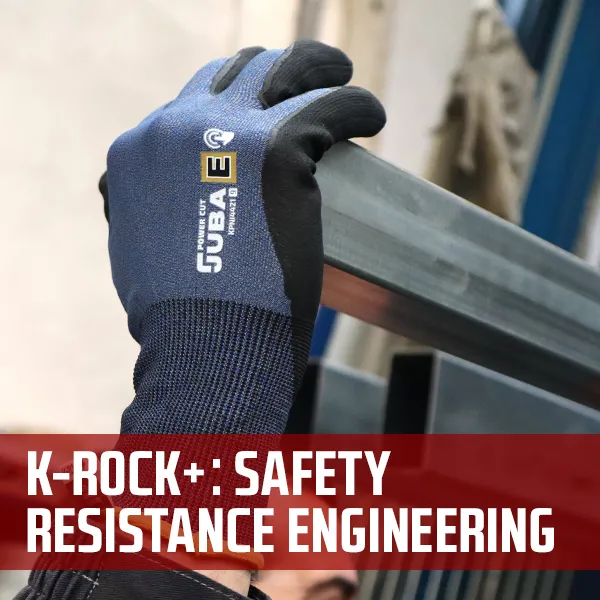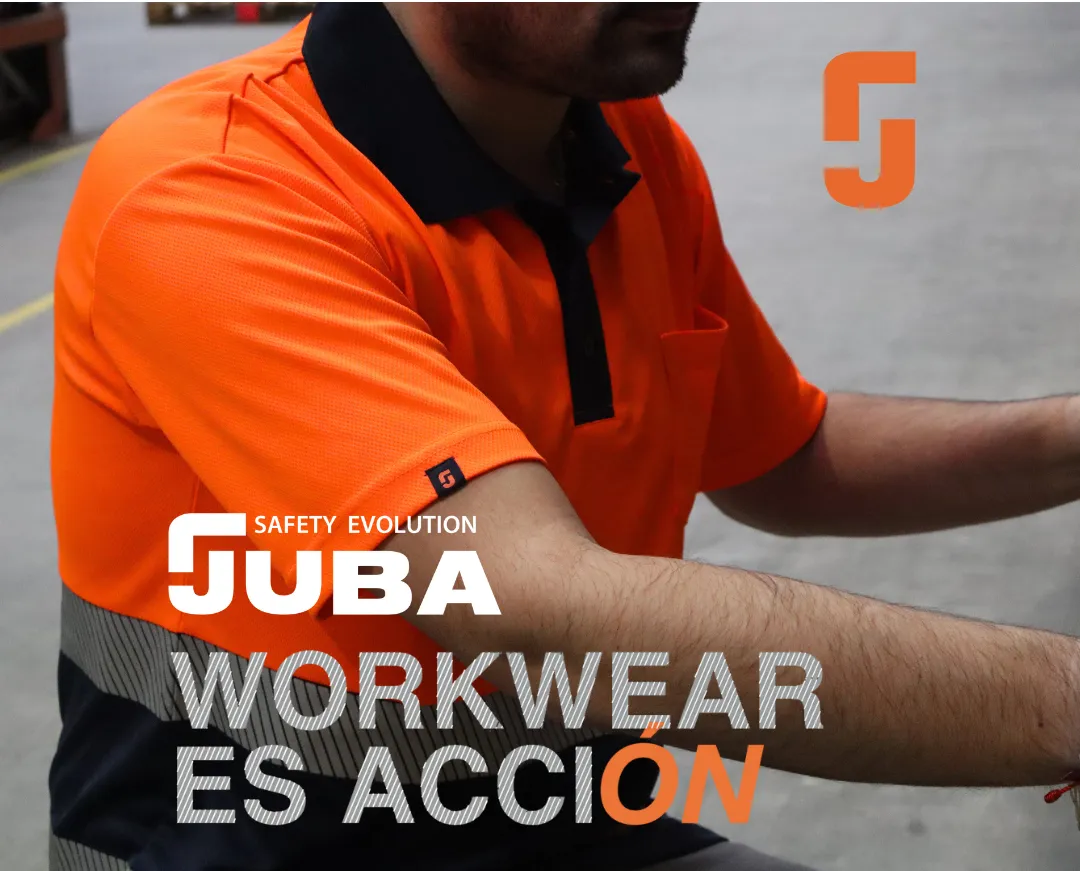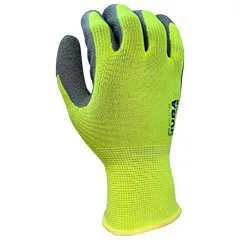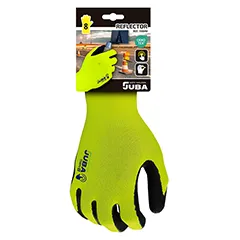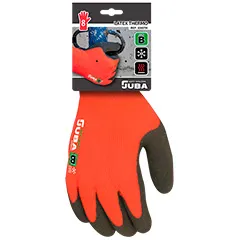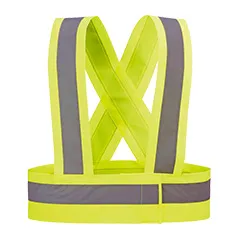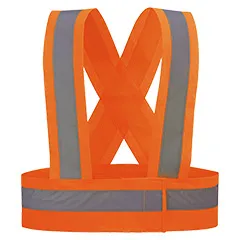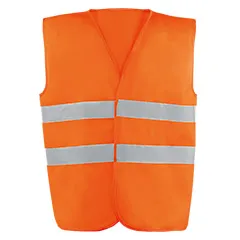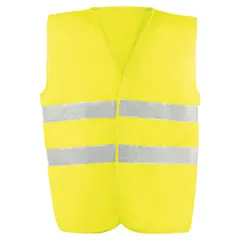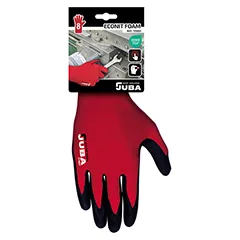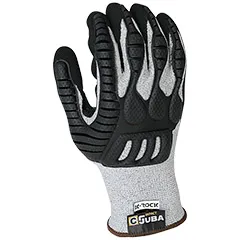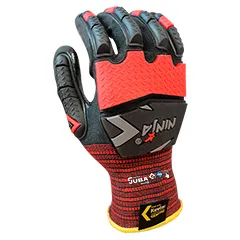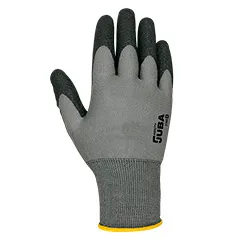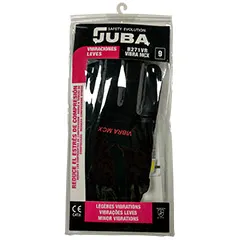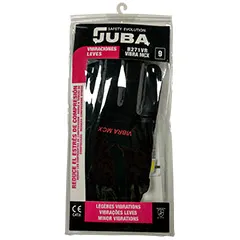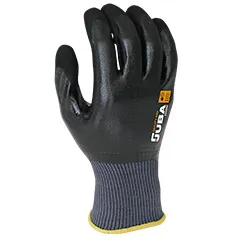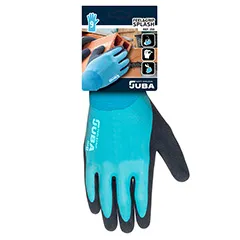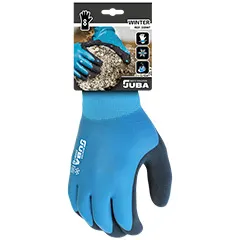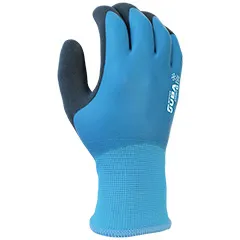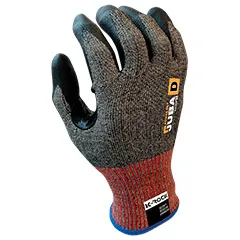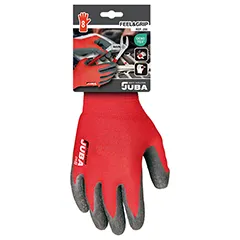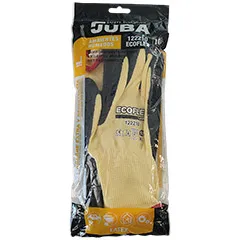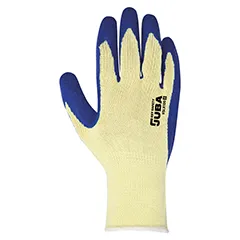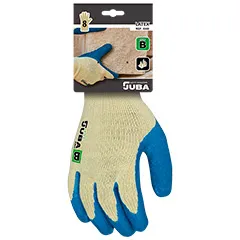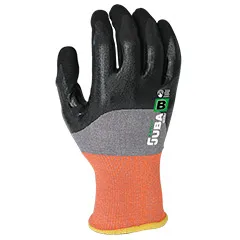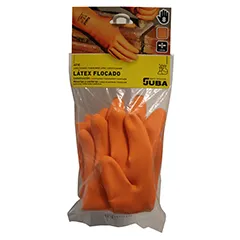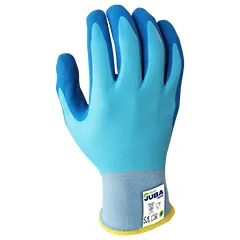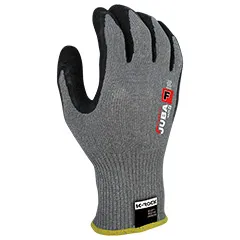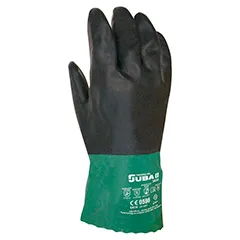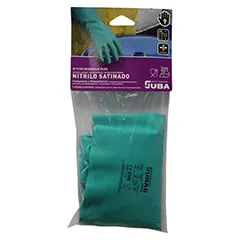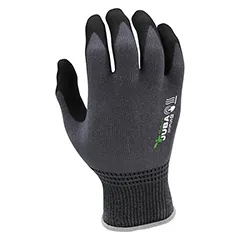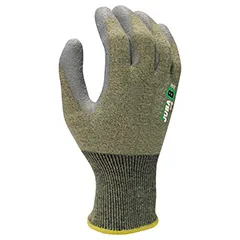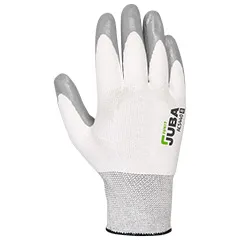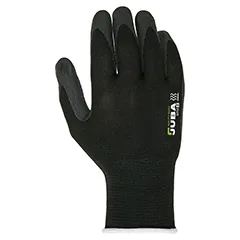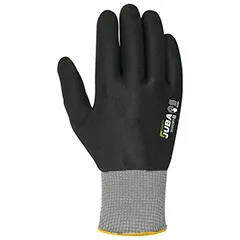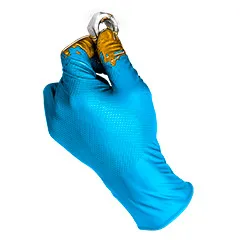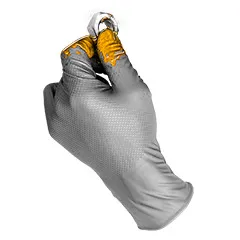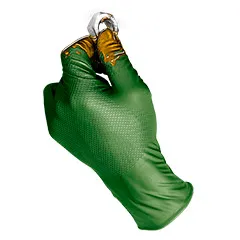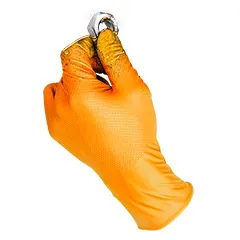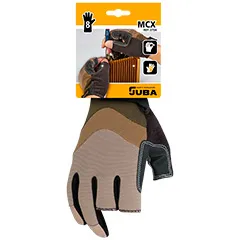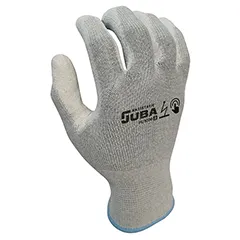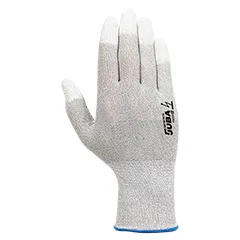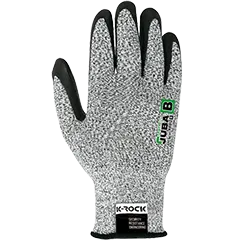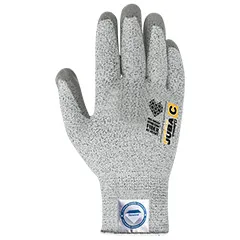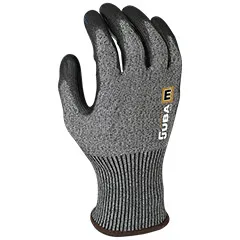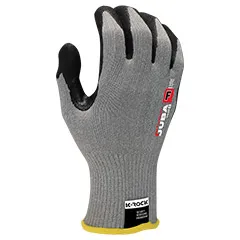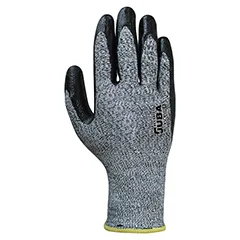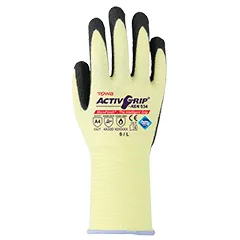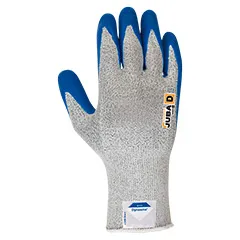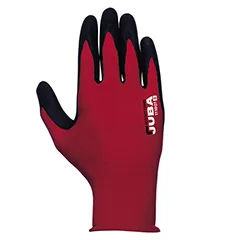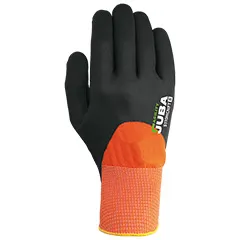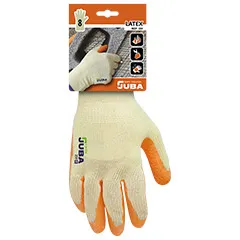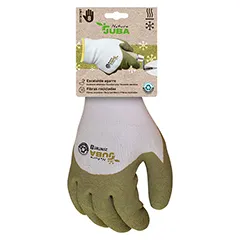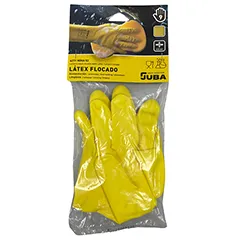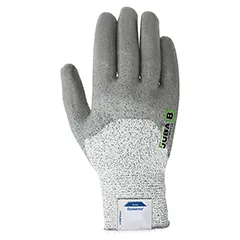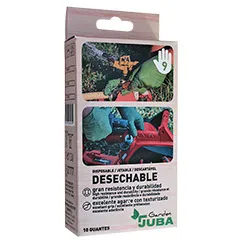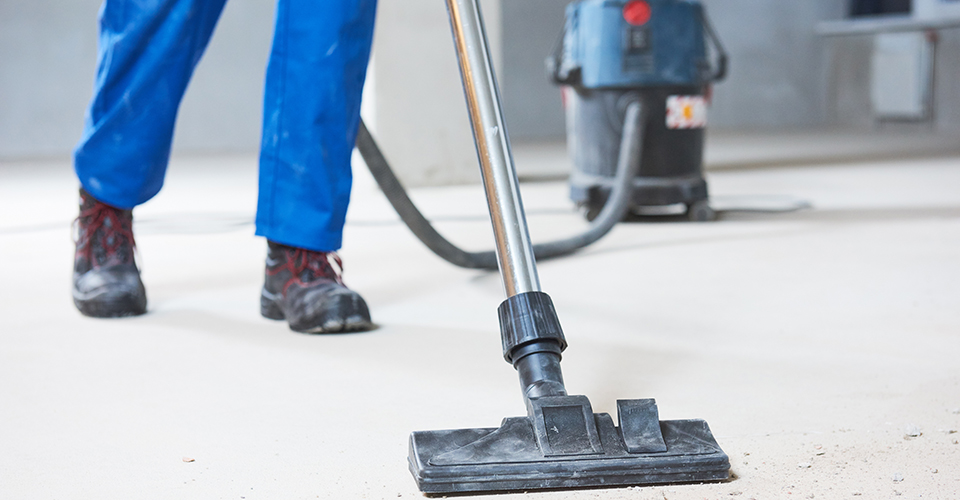K-Rock +
Construction
The construction sector covers all activities carried out when constructing and reforming any infrastructure. It is one of the sectors with the highest level of risk, and more than 20% of accidents involve the hands.
The potential occupational risk must be distinguished between occupational diseases (raynaud’s syndrome, allergies, dermatitis or skin cancer) and occupational accidents (hitting, trapping, cuts, vibrations, thermal burns and chemical burns, etc.). Weather throughout any construction must be taken into account in this sector. For this reason, JUBA has prepared a selection of gloves for each task.

Signalling and Preparation
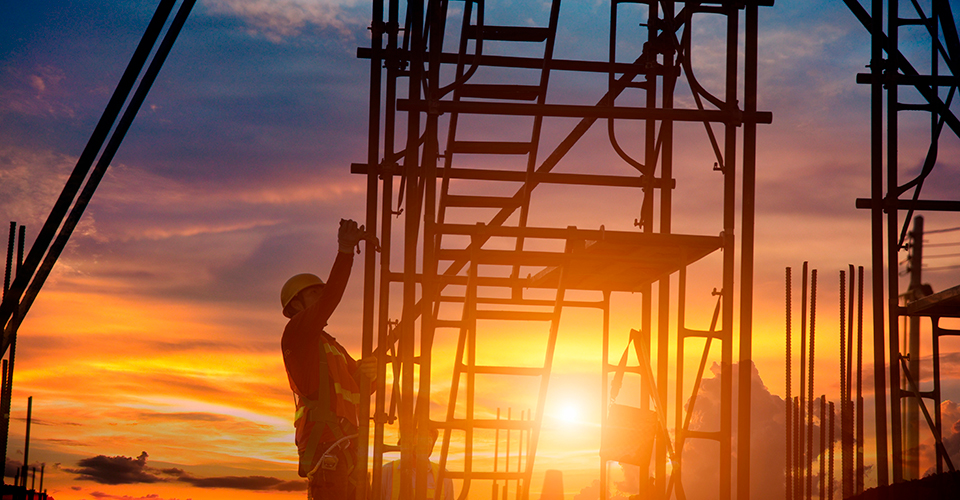
Site signage is designed to protect working personnel who must use high-visibility protections to signal their presence. It also protects against blows, scratches, cuts or punctures.
The use of scaffolding provides external structural support, and proper assembly is therefore important if this is not the case, it may cause falls, collapses and even crashes. When assembling, a good touch and grip is required to manipulate the structure. You may also run the risk of catching your fingers and striking your hands.

Gloves by phases
Earthmoving
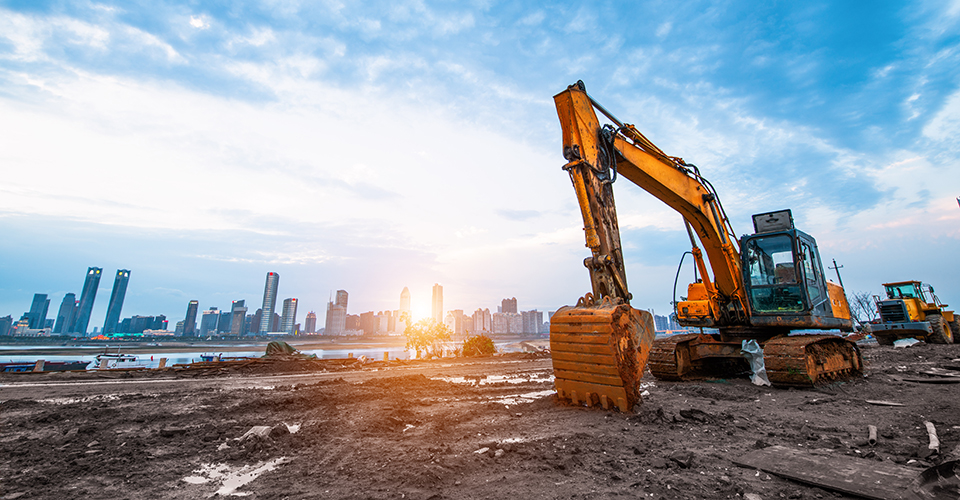
Earthmoving and excavation are intended to remove the surface layer and subgrading the ground. To do this they use heavy machinery such as blades, dumpers, backhoe loaders or hammers, among others. The most harmful risks that can occur are falling objects, projections, blows and/or cuts and even vibrations that pose different risks depending on the time of exposure to them.
Foundations and structure
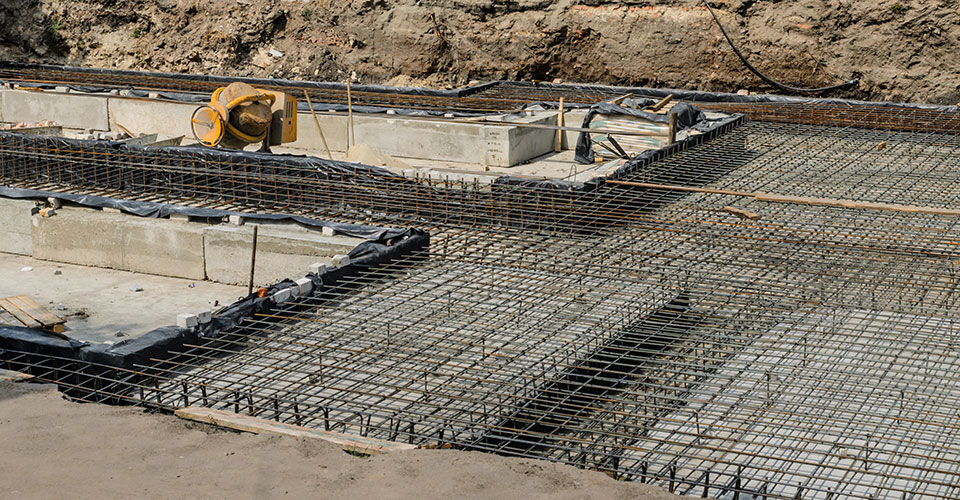
Foundations or footings are the most important basis of a construction, as they support the structure aided by steel bar rods.
The formwork is responsible for supporting the concrete up to its hardening with the help of shells, struts, lattice and tensioners. On the other hand, the skeleton aims to distribute the weight to support loads, and achieve construction immobility.
To regularise floors or be part of the finish, flooring or floor reinforcement is created.
Formwork removal uses a formwork removal liquid that acts as a cleaner, preventing the concrete or mortar from attaching to the formwork.

Gloves by phases
Foundations or footings
In this activity, the task of digging and handling clamps will require gloves with a high level of grip and abrasion.
Formwork
For these two activities gloves will be needed that are waterproof, with good touch, that are resistant to abrasion, and that protect from small cuts and blows by the steel rods.
Concrete voiding
In concrete voiding, gloves must be quite complete to provide good protection. On the one hand, they can be waterproof because the concrete can be found in two states: dry and wet, they must also be resistant to abrasion and protect from small cuts.
Flooring or floor reinforcement
In this activity they must be waterproof so that they do not transfer moisture from the concrete, as well as have a good grip and good abrasion resistance.
Deck
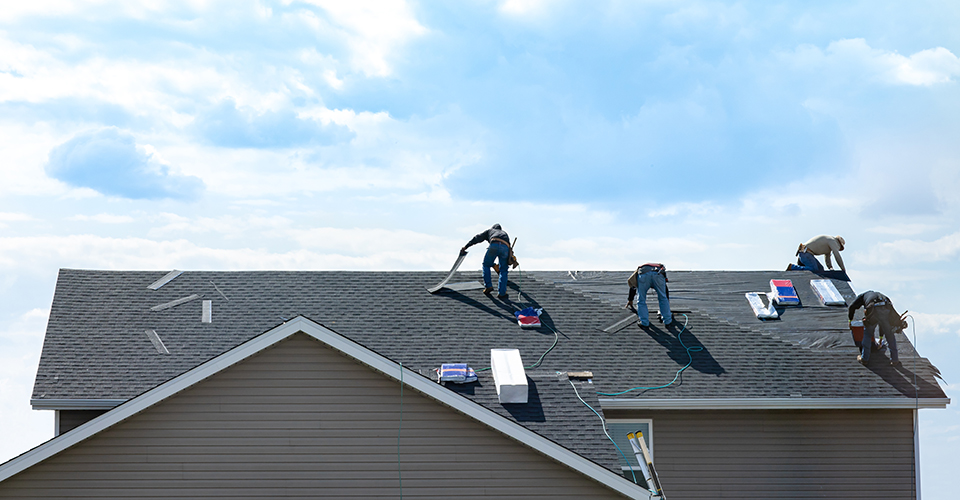
Roofs or ceilings are forged to protect the buildings in the event of rain. They use materials such as wood or metal for the frame and ceramic materials such as tile or slate for the cover. Therefore, the appropriate gloves must protect from potential cuts and punctures by the materials used, have good mobility and provide a good grip.
Insulation and waterproofing of the home
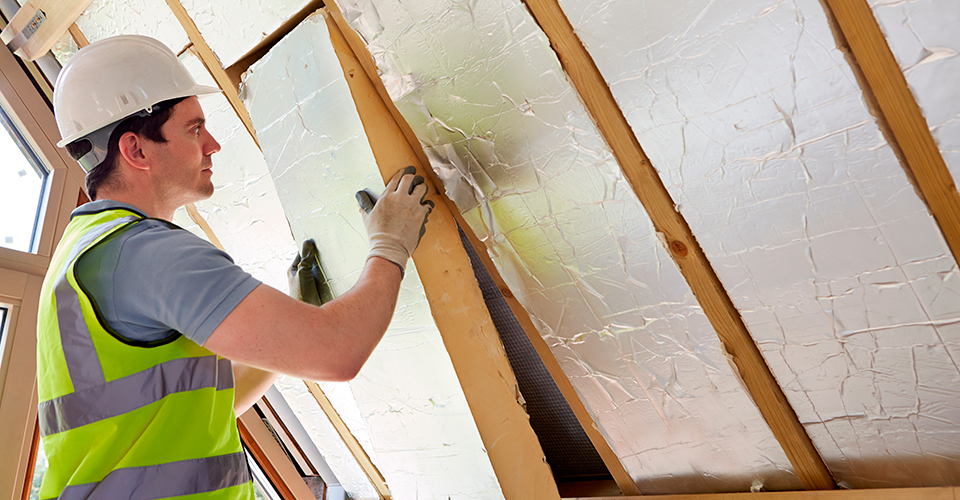
There are different types of waterproofing and treatments that act as a barrier to prevent the passage of water by extending the construction service life. Different materials are used such as asphalt fabrics, liquid waterproofing such as polyurethane, acrylic paints, black rubber paint and bituminous paints. We must have chemical and waterproof protection.
Insulation is applied to all external walls, attics, and basement or semi-basement floors during house construction. The most common materials used are fibreglass, rock wool, cellulose or foam. In this activity, you may use general purpose gloves although you may have small cuts.

Gloves by phases
Masonry and enclosures
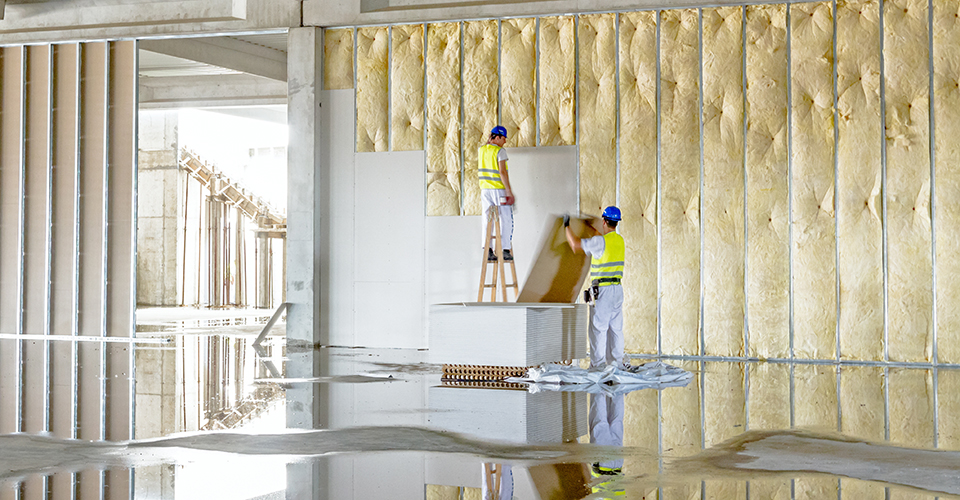
The layout of façades and interior plotting or marking on the ground where the partitions will be placed. Partition wall is the erection of brick or block walls. This is usually combined with the fitting of preframes for doors and windows.
On the other hand, there is the plasterboard which is a plate made of plasterboard used for the construction of interior partitions. They use materials such as iron profiles, screws and pastes to reseal.
In partitions and floors rosettes are made that serve to connect electrical pipes or water ducts discreetly. You can do this using a grinder or a hammer.

Gloves by phases
Facilities
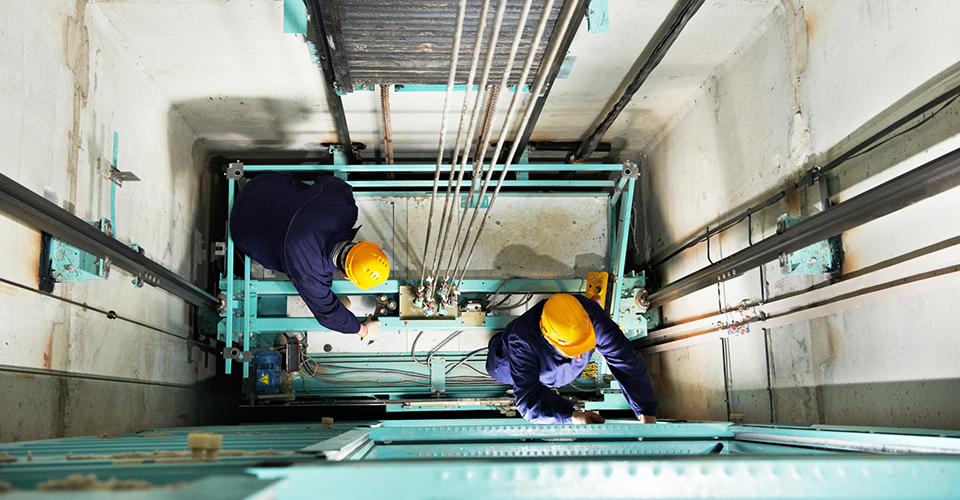
Plumbing work is associated with the installation and maintenance of piping networks to supply drinking water and waste water disposal. The most suitable gloves must have anti-cut protection, in turn they must have good dexterity to allow material handling.
On the other hand, sanitation facilitates the evacuation of wastewater.
The gas, heating and air conditioning installations, as in the plumbing, must protect the gloves from small cuts and punctures, but with a good feel for handling small materials.
Electricity and telecommunications are the key pieces in a construction because common systems such as lighting, climate control or appliances are connected.
Elevator assembly works in a reduced environment with heavy materials.

Gloves by phases
Electricity and telecommunications
These activities require a lot of touch and grip to hold the wires securely and not slip once they are impregnated with grommeted gel.
Carpentry
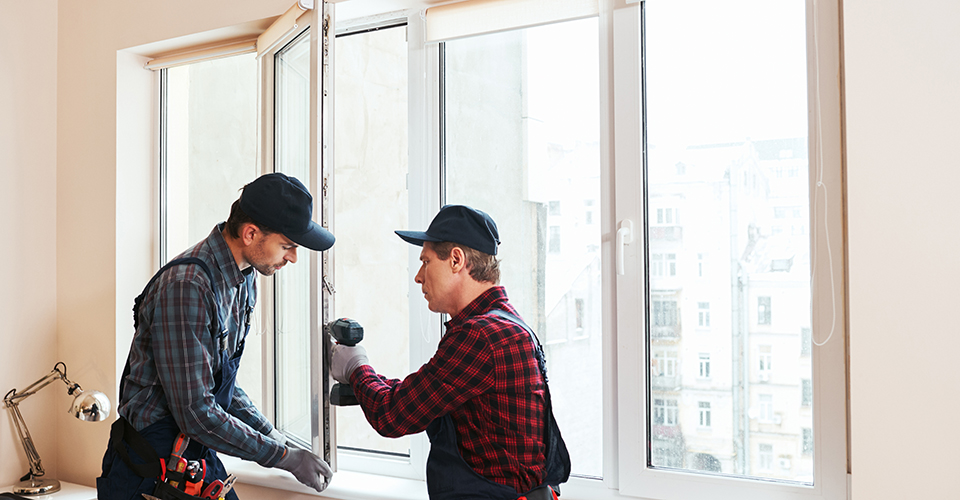
Exterior carpentry is related to the exterior enclosures of a building. We distinguish several elements between doors and windows of aluminium or PVC, we find blinds of aluminium or PVC, lattices of ceramic, wood or aluminium and also metal railings of aluminium or sheet steel.
Interior carpentry and joinery are finishes and furniture as they are made inside a work using mainly wood. We distinguish interior doors, baseboards or skirting boards, stairs, tables or chairs etc.
Steel carpentry plays an important role in construction to make structures such as handrails, grilles, and even windows.
Glazing is the assembly of glass or glass on doors, windows, terraces or galleries.

Gloves by phases
Final Finishes
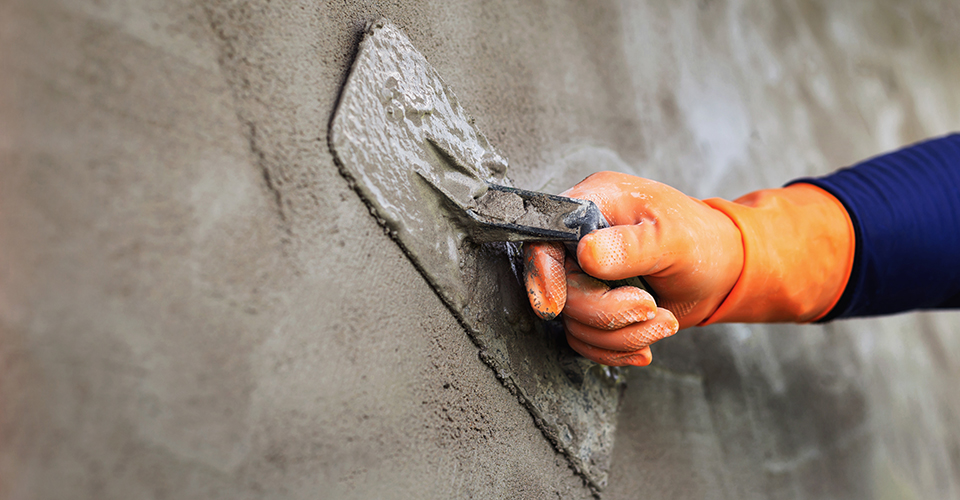
The final finishes are the final materials that are placed to coat or coat the supporting elements such as walls, forgings or covers. They have the function of protecting, sealing and waterproofing, as well as providing an attractive, aesthetically pleasing look and above all should provide comfort for the user.

Gloves by phases
Tiling
Tiling is the lining of the walls or floors with porcelain tiles, using different tools such as mixers, flats, tile cutters, rubber tights, sponges, etc., to achieve the desired finish. For this type of work it is recommended that the gloves have good abrasion resistance, that they protect from cuts by tiles, that they provide excellent grip and above all that they have a good touch so as not to hinder work and handle the materials without problems.
Stoneware floor
The floor covering can be stoneware (tiles). Taking into account this material used, gloves must be chosen with a good touch and grip to facilitate mobility in performing the work, in addition to protecting against cuts caused by the tiles.
Wall covering
To cover the faces or walls there are different materials that can be worked with such as plaster, mortar or stoneware. These are materials used wet and contain chemical products, which can affect the skin with allergic reactions or dermatitis, dry skin, etc.
Roofing
Materials used in roofing can be made of gypsum, plaster or plasterboard. Therefore, we will need gloves that allow good mobility in the hand to handle the material, with an excellent grip. It would be good for gypsums and plasters that gloves can also protect from moisture.
Grout, bonding and plastering
Grout, bonding and plastering is a paste of cement, mortar or plaster used to fill gaps, seal joints and level a surface. It would be good if the gloves used allow good dexterity for the worker. Like with roofs, they should protect from moisture as the workers use wet materials.
Painters
Painters are responsible for lining with paper or paint on any surface. When using different substances such as pigments, binders, solvents or plasticisers, they should mainly use chemical protective gloves, allowing good dexterity.
